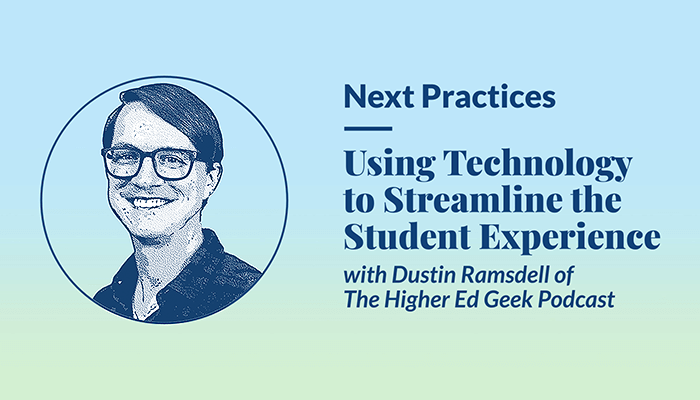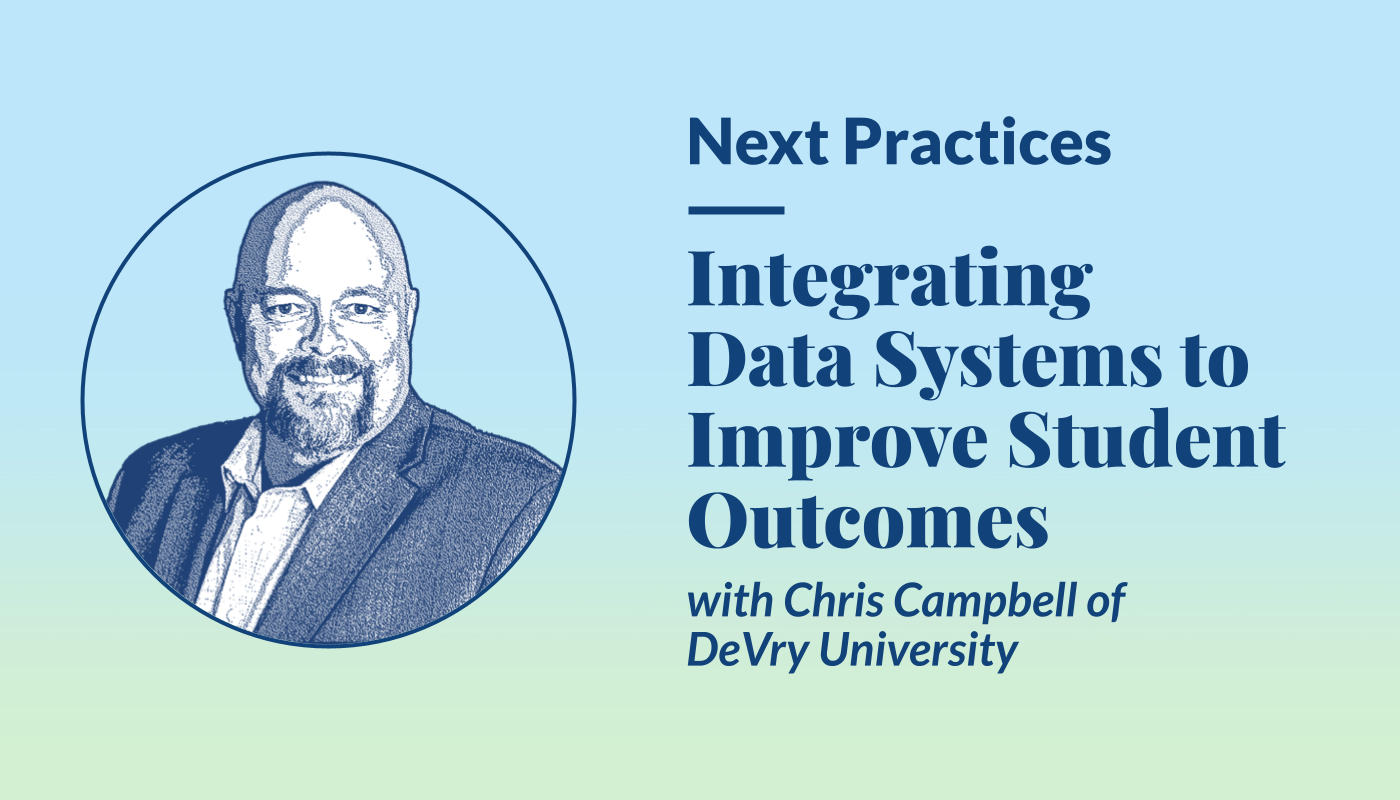
Using Technology to Streamline the Student Experience with Dustin Ramsdell
Share this Post
Subscribe: Spotify | Apple Podcasts | Youtube Music | Full Transcript
At a time when students are increasingly driven by careers and less by traditional academic pathways, institutions are adapting their offerings and technology systems to better support a new generation of students. Dustin Ramsdell, education technology leader and host of the Higher Ed Geek Podcast, discusses this trend with us and shares his professional insights on how institutions can provide more accessible student pathways.
Reassess Academic Structures
These days, the time and money required to complete a degree are becoming more impractical, leaving many with loads of debt but no credentials. To combat this, institutions are considering strategic changes like shorter degree programs, more competency-based education, and partnerships with corporations.
Guided by students’ growing interest in workforce preparation, strategic partnerships with corporations will be a major trend in coming years. Dustin Ramsdell predicts that these partnerships will “move things along and get to a new paradigm and status quo where higher education can plug in with what students want to learn and the way they want to learn it and do all that in a cost-effective way.”
Improve Student Awareness
While institutions have increased the number of student success resources, many students still remain unaware that these resources exist or are unsure how to access them. “The modality of delivery matters,” Ramsdell affirms. “You want to have a wide array of availability and accessibility for these resources.” It’s the responsibility of all student-facing departments to make their services clear to all students.
Build Cross-Campus Connectedness
Since the pandemic, many students have struggled to connect with peers and professors and achieve a sense of belonging in their institutions. There’s a great need for support in this area–not only in the number of resources available but also in the delivery and accessibility of those resources. Perhaps it starts with expanding office hours or offering virtual appointments. Whichever changes take place, the goal should be to increase student engagement at every touchpoint.
Integrate New Technology into Current Systems
These days, the technology systems institutions can choose from are nearly endless. The key is to have an integrated digital system that works with the tools already in place. Ramsdell predicts the rising value of chatbots in higher education systems–whether it’s embedded in a mobile app, web experience, text messages, or other student-facing systems. Offering 24/7 support with chatbots will help students get quick answers to their questions and connect them with the right teams.
Maintain a Cohesive Digital Experience
If an institution has several systems in play, it’s important to ensure they work cohesively. For example, an advisor should be able to easily find all relevant areas of their students’ academic experience in one or two places–whether it’s grades, drops, or LMS activity. Keeping this data organized and accessible to staff makes identifying at-risk students easier and offers proactive guidance.
Build Technology Tools on Best Practices
The use of technology will differ at each school depending on their unique needs and student groups. For years, departments have relied on best practices alone to make their technology systems work for them. Now, we’re seeing a shift towards customizing tools to meet the specific circumstances of each institution. By coupling best practices with student-specific data, institutions will gain better insights into how technology can influence their unique student body–and it’s in this unity that institutions can make big headway in retention and persistence.
Build Community with Higher Education Leaders
As higher education teams continue to grapple with complex issues of a new generation of students, it’s important for leaders to connect with each other, lend support, and share ideas. It’s through this connection and collaboration that institutions can spark impactful change for students, and support the staff that serves them.
Listen to the full conversation on Next Practices to learn more about Dustin Ramsdell’s predictions of higher education trends and how to integrate technology effectively in student-facing departments.


